The common eland, scientifically known as Taurotragus oryx, is a large antelope species native to the savannas and grasslands of eastern and southern Africa. It is one of the largest antelope species and possesses distinctive physical characteristics.
Common elands are robust animals, with males weighing between 400 and 1,000 kg (880 to 2,200 lbs) and standing at a shoulder height of about 150 to 180 cm (59 to 71 inches). Females are slightly smaller than males. They have a tan or reddish-brown coat, which can vary in shade depending on the region and individual. Both males and females have spiral-shaped horns that can reach up to 120 cm (47 inches) in length.
These antelopes are well adapted to various habitats, including grasslands, woodlands, and semi-desert areas. They are known for their endurance and ability to withstand harsh conditions, such as droughts. Common elands are primarily browsers, feeding on leaves, shoots, fruits, and grasses. They have a unique ability to digest a wide variety of plant materials, including tough and fibrous vegetation.
Common elands are social animals, forming herds consisting of females, their offspring, and young males. Adult males tend to be solitary or form bachelor groups. During the mating season, known as the rut, males engage in fierce competition to establish dominance and mate with receptive females.
After a gestation period of about 9 months, the female gives birth to a single calf, which can stand and walk shortly after birth. The calf remains hidden in vegetation for protection and is periodically nursed by its mother. Common elands have a lifespan of around 15 to 20 years in the wild.
Common Eland: Species Profile
COMMON NAME: Common Eland
SWAHILI NAME: Pofu
SCIENTIFIC NAME: Taurotragus oryx
TYPE: Mammal
FOOD: Common elands are herbivores, primarily feeding on grasses and browse. They have a diverse diet that includes leaves, shoots, fruits, and bark. They are capable of consuming a wide range of vegetation to meet their nutritional needs.
HABITAT: Common elands inhabit various habitats such as grasslands, savannas, woodlands, and open plains. They are found across sub-Saharan Africa in diverse environments, including both arid and more fertile regions. They are adaptable animals and can survive in different types of habitats, as long as there is access to food and water.
SIZE: Common elands are one of the largest antelope species. Adult males, known as bulls, can reach a shoulder height of around 150-180 centimeters (59-71 inches) and weigh between 400-1,000 kilograms (880-2,200 pounds). Adult females, known as cows, are slightly smaller, with a shoulder height of approximately 140-170 centimeters (55-67 inches) and a weight of 300-600 kilograms (660-1,320 pounds).
AVERAGE LIFE SPAN IN THE NATURAL HABITAT: In the wild, common elands have an average lifespan of around 15-20 years. However, some individuals have been known to live longer in protected areas or captivity.
ACTIVE: Common elands are diurnal animals, meaning they are primarily active during the daytime. They are known to be both grazers and browsers, feeding on a variety of vegetation depending on the availability and quality of food in their habitat.
GESTATION PERIOD: The gestation period of common elands lasts for approximately 8-9 months. After this period, a single calf is born, which can walk and follow its mother shortly after birth. The mother provides care and protection to the calf until it becomes independent.
WEIGHT: The weight of adult common elands varies depending on their sex. Adult bulls can weigh between 400-1,000 kilograms (880-2,200 pounds), while adult cows weigh approximately 300-600 kilograms (660-1,320 pounds).
SIZE COMPARISON TO A 6-FT MAN: Common elands are much larger than a 6-ft man. Adult males can reach a shoulder height of around 150-180 centimeters (59-71 inches), making them significantly taller and bulkier than a human.
Impressive Physical Attributes:
The common eland (Taurotragus oryx) is a large and majestic antelope species native to East and Southern Africa. Here are some key characteristics of their appearance:
- Size: Common elands are one of the largest antelope species, with males standing around 5 to 6 feet (1.5 to 1.8 meters) tall at the shoulder. They can reach an impressive length of 8 to 12 feet (2.4 to 3.6 meters) from head to tail. Males are generally larger than females.
- Body Shape: Elands have a robust and sturdy build. Their bodies are deep-chested and compact, with long, slender legs that aid in their agility and running abilities. They have a distinctive shoulder hump, which is more prominent in males.
- Coat: The common eland’s coat varies in color from light tan to reddish-brown, depending on the individual and its habitat. The coat is smooth and sleek, and they have a short, coarse mane running along their neck and shoulders. The hair on their body is thin and often has a slight sheen to it.
- Markings: Elands have a series of striking vertical white stripes along their sides, which contrast beautifully with their main coat color. These stripes are a unique feature that sets them apart from other antelope species. Additionally, they have a distinctive white patch on their lower rump and a darker tuft of hair at the tip of their tail.
- Horns: Both male and female common elands possess impressive, spiraled horns. The horns are long and can grow to be around 2 to 3 feet (0.6 to 0.9 meters) in length. They are thick at the base and taper to a pointed tip. The horns of males tend to be slightly thicker and more robust than those of females.
- Facial Features: Common elands have a strikingly beautiful face, characterized by a pair of large, dark eyes and a moist, black nose. They have prominent, rounded ears that are often tufted with long hair. Their mouth is lined with thick, black lips, which aid in their browsing diet.
- Sexual Dimorphism: Males and females of the common eland exhibit sexual dimorphism, with males being larger and heavier than females. Males also have a more prominent dewlap, which is a loose flap of skin hanging from their throat region.
The common eland’s appearance showcases their regal stature and remarkable adaptability to their natural environment. Whether encountered on a safari or in their native habitat, their impressive size and unique markings make them a captivating sight to behold.
Habitat and Range:
The common eland is well adapted to a variety of habitats, including open grasslands, savannas, woodlands, and mountainous regions. They are native to several countries in eastern and southern Africa, including Kenya, Tanzania, South Africa, Namibia, and Zimbabwe. Their ability to thrive in diverse environments contributes to their widespread distribution.
Behavior and Adaptations:
The common eland (Taurotragus oryx) exhibits fascinating behaviors that are worth exploring. Here are some key aspects of their behavior:
- Social Structure: Common elands are primarily gregarious animals, forming herds that can range in size from a few individuals to several dozen. These herds are usually composed of females, juveniles, and young males. Adult males often form bachelor groups or may be solitary.
- Communication: Elands utilize various forms of communication to interact with each other. They produce a range of vocalizations, including deep roars, barks, grunts, and snorts, which are used to establish territory, signal danger, or communicate with other herd members. Visual displays, such as head shaking and neck posturing, are also employed during interactions.
- Mating Rituals: During the breeding season, male elands engage in impressive displays to establish dominance and attract females. These displays involve elaborate behaviors such as parallel walking, head tossing, and performing high leaps known as “pronking.” Dominant males may also emit loud vocalizations to assert their dominance and ward off competing males.
- Territoriality: Male elands are territorial and will establish and defend their territories through displays of dominance and vocalizations. Territories typically encompass areas rich in resources such as water sources and quality grazing areas. The size of a male’s territory may vary depending on factors like population density and resource availability.
- Feeding Habits: Common elands are herbivores with a varied diet. They are both grazers and browsers, meaning they consume a combination of grasses, leaves, shoots, fruits, and bark. This adaptable feeding behavior allows them to thrive in different habitats.
- Water Dependency: Elands have a higher water dependency compared to other antelope species. They require regular access to water sources, especially during the dry season when water availability may be limited. Their ability to adapt their diet to different vegetation types helps them survive in varying environmental conditions.
- Migration Patterns: In response to seasonal changes and resource availability, elands may undertake seasonal migrations or movements. These movements are often driven by the search for water and fresh grazing grounds. However, migration patterns can vary between populations and are influenced by local conditions.
- Anti-Predator Strategies: When faced with predators, elands employ different defense strategies. They may form defensive circles, where individuals gather with their heads facing outward to deter potential threats. Elands can also employ their impressive speed and agility to escape predators by running at high speeds or leaping over obstacles.
- Parental Care: Female elands give birth to a single calf, which is capable of standing and running shortly after birth. The young calf remains hidden for the first few weeks of life, and the mother returns periodically to nurse it. Females within the herd may form nursery groups, providing additional protection and care for the calves.
- Adaptability: Common elands are adaptable and can thrive in various habitats, including grasslands, savannas, woodlands, and even mountainous areas. This adaptability contributes to their widespread distribution across sub-Saharan Africa.
Understanding the behavior of common elands adds depth to their portrayal and allows us to appreciate their remarkable social interactions, communication methods, and survival strategies in the wild.
Ecological Significance:
The common eland is considered a “keystone species” due to its significant impact on the ecosystem. As selective grazers, they play a crucial role in shaping vegetation patterns and maintaining biodiversity in their habitats. Their feeding habits also help control the spread of grasses, promoting a healthy balance within the ecosystem.
Conservation Status:
The common eland is currently classified as a species of “Least Concern” by the International Union for Conservation of Nature (IUCN). While the population remains relatively stable, localized threats such as habitat loss, poaching, and competition with livestock can impact their numbers in certain regions. Continued conservation efforts, including protected areas and sustainable land management practices, are vital for ensuring the long-term survival of this iconic African species.
Taurotragus oryx
The Taurotragus oryx (common eland), with its commanding presence and majestic horns, exemplifies the grandeur of African wildlife. Its ability to adapt to various habitats, impressive physical attributes, and vital ecological role make it an integral part of the African savannas. By valuing and protecting the common eland, we not only safeguard a magnificent species but also contribute to the preservation of the intricate balance of African ecosystems.
Common eland Adaptations
The common eland (Taurotragus oryx) has evolved several remarkable adaptations that enable it to thrive in its natural habitat. Here are some key adaptations of this impressive antelope species:
- Size and Body Structure: The common eland is one of the largest antelopes, and its large size serves as a notable adaptation. Their robust build, with a deep chest and sturdy legs, allows them to navigate various terrains and endure long-distance migrations.
- Efficient Digestive System: Elands possess a unique digestive system that enables them to extract maximum nutrition from their food. They have a multi-chambered stomach, including a large fermentation chamber, which aids in the breakdown of tough plant materials and enhances their ability to digest fibrous vegetation.
- Adapted Teeth: Elands have well-developed incisors and molars adapted for browsing and grazing. Their teeth are specially designed to efficiently process a wide range of plant matter, including tough leaves, grasses, and even tree bark.
- Water Dependency: Compared to other antelope species, elands have a higher water dependency. They have evolved to survive in areas with limited water resources by being able to efficiently extract moisture from the vegetation they consume. This adaptation helps them thrive in arid and semi-arid environments.
- Thermoregulation: Elands are adapted to cope with high temperatures and intense sunlight. They have a thin coat of fur that helps them dissipate heat, and they utilize behavioral adaptations such as seeking shade during the hottest parts of the day and becoming more active during cooler periods.
- Acute Vision: The common eland has excellent eyesight, allowing them to detect potential predators from a distance. Their large, dark eyes are positioned on the sides of their head, providing them with a wide field of vision and the ability to scan their surroundings for threats.
- Speed and Agility: Despite their large size, elands are surprisingly agile and can reach impressive speeds when necessary. They are capable of running at speeds of up to 40 miles per hour (64 kilometers per hour), allowing them to escape predators or navigate challenging terrain.
- Social Behavior: The social structure of elands is an important adaptation that enhances their survival. Living in herds provides them with increased vigilance against predators, as multiple individuals can watch for danger while others feed or rest.
- Camouflage: The common eland’s coat coloration, consisting of shades of tan and brown, acts as camouflage in their natural habitats. This adaptation helps them blend into their surroundings, making it easier to evade predators or approach potential food sources unnoticed.
- Hooves: Elands have large, robust hooves that aid in traversing various terrains, including soft soil, rocky surfaces, and even marshy areas. Their hooves provide stability and support, enabling them to move efficiently across different landscapes.
These adaptations have allowed the common eland to become a highly successful and adaptable species, capable of thriving in diverse habitats across Africa. Their physical and physiological traits have been honed over generations, ensuring their survival and continued presence in the wild.
Best place to see Common Elands in Tanzania
If you’re interested in seeing common elands (Taurotragus oryx) in Tanzania, there are several locations where you have a good chance of encountering these magnificent antelopes. Here are some of the top places to see common elands in Tanzania:
- Serengeti National Park: As one of Tanzania’s most iconic and renowned national parks, Serengeti offers ample opportunities to spot common elands. The vast grasslands and woodland areas provide a suitable habitat for these majestic antelopes. The Seronera region in the central Serengeti is particularly known for eland sightings.
- Ngorongoro Conservation Area: This UNESCO World Heritage Site is home to the spectacular Ngorongoro Crater, which harbors a diverse range of wildlife, including common elands. The grassy plains and forested slopes of the crater provide an ideal environment for elands to thrive.
- Tarangire National Park: Located in northern Tanzania, Tarangire National Park is famous for its large elephant population, but it is also a great place to spot elands. The park’s diverse habitats, including acacia woodlands, riverine forests, and open grasslands, attract these antelopes.
- Lake Manyara National Park: With its unique blend of groundwater forest, open grasslands, and the picturesque Lake Manyara itself, this national park offers opportunities to observe common elands in a stunning setting. Keep an eye out for them while exploring the park’s diverse ecosystems.
- Ruaha National Park: Situated in the heart of Tanzania, Ruaha National Park is known for its vast wilderness and diverse wildlife. The park’s rugged landscapes, woodlands, and river systems provide an ideal habitat for elands, making it a promising destination for eland sightings.
- Selous Game Reserve: As one of Africa’s largest game reserves, Selous offers a pristine and untouched wilderness. The reserve’s diverse habitats, including woodlands, grasslands, and wetlands, support a healthy population of common elands.
- Mikumi National Park: Located close to Tanzania’s largest city, Dar es Salaam, Mikumi National Park is easily accessible and offers a chance to spot elands along with other wildlife. The open grassy plains and rolling hills make it an ideal habitat for these antelopes.
When planning your visit to these locations, it’s recommended to engage the services of a knowledgeable guide or join guided safari tours. They have expertise in locating wildlife and can enhance your chances of encountering common elands in their natural habitat. Remember to respect the park regulations and maintain a safe distance to ensure a memorable and responsible wildlife experience.
Common eland Safari tips
When embarking on a common eland safari in Tanzania, it’s important to be well-prepared to make the most of your wildlife experience. Here are some helpful safari tips to ensure a memorable encounter with these magnificent antelopes:
- Choose the Right Season: Consider visiting during the dry season, typically from June to October, as this is when vegetation is sparse, and animals gather around water sources. During this time, elands are more likely to congregate in specific areas, increasing your chances of sightings.
- Plan Your Safari Duration: Allocate enough time for your safari to allow for exploration and wildlife encounters. A minimum of three to four days is recommended to increase the likelihood of seeing common elands and other wildlife in their natural habitat.
- Engage Knowledgeable Guides: Opt for experienced safari guides who are familiar with the behavior and habitats of common elands. Their expertise can significantly enhance your safari experience and help locate eland herds efficiently.
- Game Drives and Bush Walks: Utilize game drives and bush walks to explore different areas where common elands are known to frequent. Game drives provide the advantage of covering larger distances, while bush walks offer a more intimate and immersive experience in the wilderness.
- Observe Quietly and Patiently: Elands can be skittish, so it’s important to approach them quietly and maintain a safe distance to avoid causing any disturbance. Be patient and allow the elands to become comfortable with your presence, increasing the chances of observing their natural behaviors.
- Early Mornings and Late Afternoons: Common elands are most active during the cooler parts of the day, particularly early mornings and late afternoons. Plan your safari activities around these times for optimal wildlife sightings, including elands grazing or engaging in social interactions.
- Pack Essential Gear: Ensure you have the necessary gear for a comfortable and successful safari. This includes lightweight and breathable clothing, a wide-brimmed hat, sunscreen, insect repellent, binoculars, and a camera with extra batteries and memory cards to capture the moments.
- Respect Wildlife and Their Habitat: It’s crucial to maintain a respectful distance from the elands and other wildlife. Avoid any disruptive behavior, such as loud noises or sudden movements, as this can stress or frighten the animals. Follow park regulations and guidelines to protect the environment and its inhabitants.
- Be Prepared for Weather Changes: Tanzanian weather can be unpredictable, so pack layers and be prepared for temperature fluctuations. Carry a light rain jacket or poncho in case of sudden showers and wear comfortable walking shoes suitable for both dry and potentially muddy conditions.
- Enjoy the Overall Safari Experience: While the primary goal may be to see common elands, remember to appreciate the entire safari experience. Tanzania’s diverse landscapes and rich wildlife offer a plethora of unique encounters. Take time to observe other wildlife species, soak in the breathtaking scenery, and embrace the awe-inspiring beauty of nature.
By following these common eland safari tips, you can increase your chances of having a rewarding and unforgettable experience in Tanzania’s wilderness. Cherish every moment as you witness these remarkable antelopes in their natural habitat.
Frequently Asked Questions about Common Elands
Q: What is a common eland?
A: The common eland (Taurotragus oryx) is a large antelope species found in various parts of sub-Saharan Africa. It is known for its impressive size, distinctive spiral horns, and unique behaviors.
Q: Where do common elands live?
A: Common elands inhabit a range of habitats, including grasslands, woodlands, savannas, and mountainous regions. They can be found in several African countries, including Tanzania, Kenya, South Africa, Zimbabwe, and Namibia.
Q: What do common elands eat?
A: Common elands are herbivores with a varied diet. They are both grazers and browsers, feeding on a range of vegetation, including grasses, leaves, shoots, fruits, and bark. This adaptable feeding behavior allows them to thrive in different habitats.
Q: How big are common elands?
A: Common elands are one of the largest antelope species. Adult males, known as bulls, can reach a shoulder height of up to 6 feet (1.8 meters) and weigh around 1,000 to 2,200 pounds (450 to 1,000 kilograms). Adult females, or cows, are slightly smaller.
Q: Do common elands live in herds?
A: Yes, common elands are social animals and often form herds. These herds usually consist of females, juveniles, and young males. Adult males may form bachelor groups or be solitary, particularly during the non-breeding season.
Q: Are common elands endangered?
A: The common eland is currently classified as a species of “Least Concern” by the International Union for Conservation of Nature (IUCN). While local populations may face threats such as habitat loss and poaching, their overall population is stable and widespread.
Q: Do common elands have any predators?
A: Common elands have several natural predators, including lions, hyenas, leopards, and African wild dogs. When threatened, elands can display defensive behaviors such as forming defensive circles or using their speed and agility to escape predators.
Q: How fast can common elands run?
A: Common elands are remarkably fast runners. They can reach speeds of up to 40 miles per hour (64 kilometers per hour), allowing them to evade predators and cover large distances when necessary.
Q: When do common elands breed?
A: Breeding in common elands can occur throughout the year, although there may be peaks in mating activity during certain seasons. Male elands engage in elaborate displays to attract females, and after a gestation period of around 8 to 9 months, a single calf is born.
Q: Can common elands be seen on safari in Tanzania?
A: Yes, Tanzania is one of the countries where common elands can be spotted on safari. National parks such as Serengeti, Ngorongoro, Tarangire, and Manyara provide excellent opportunities to observe these magnificent antelopes in their natural habitat.

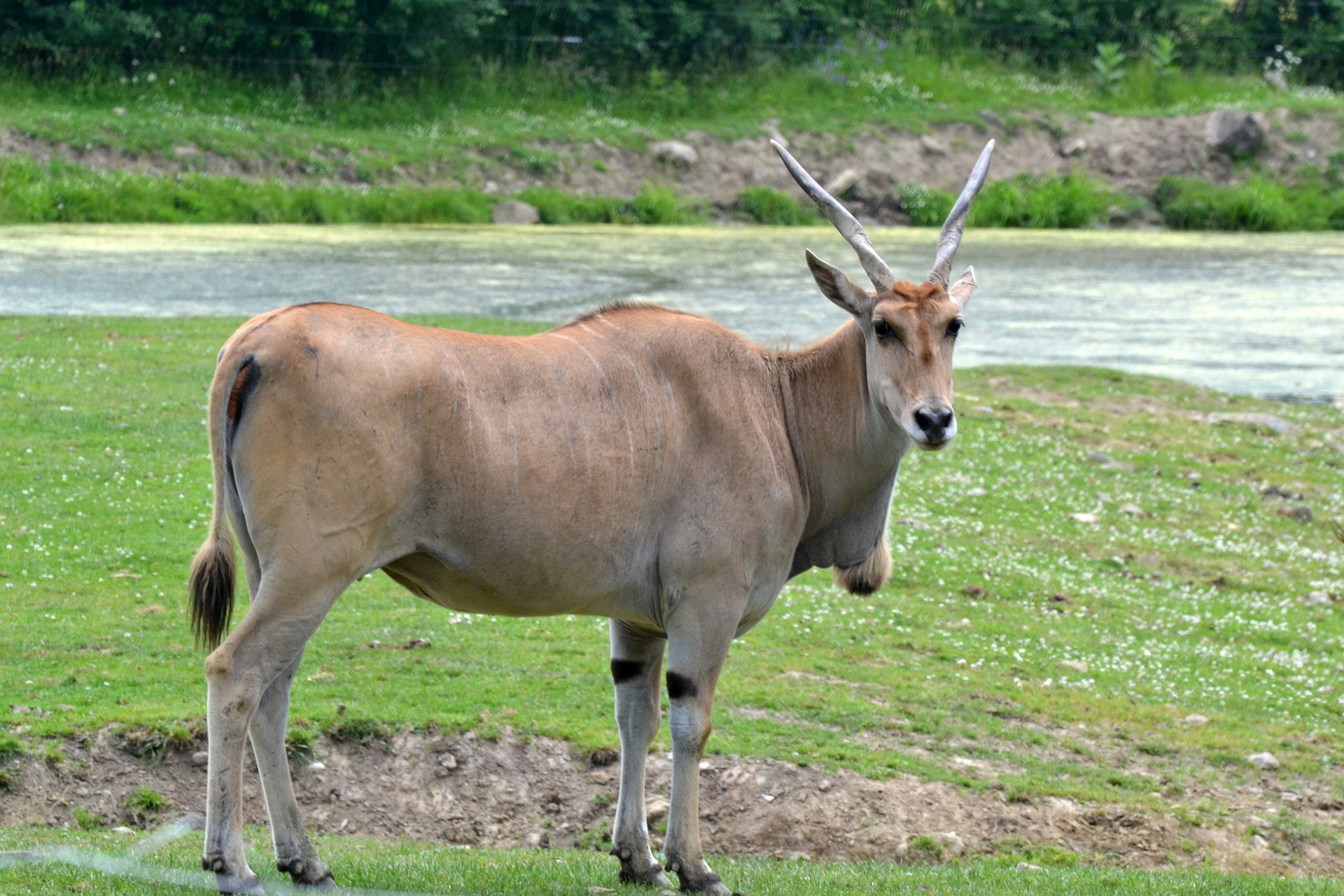
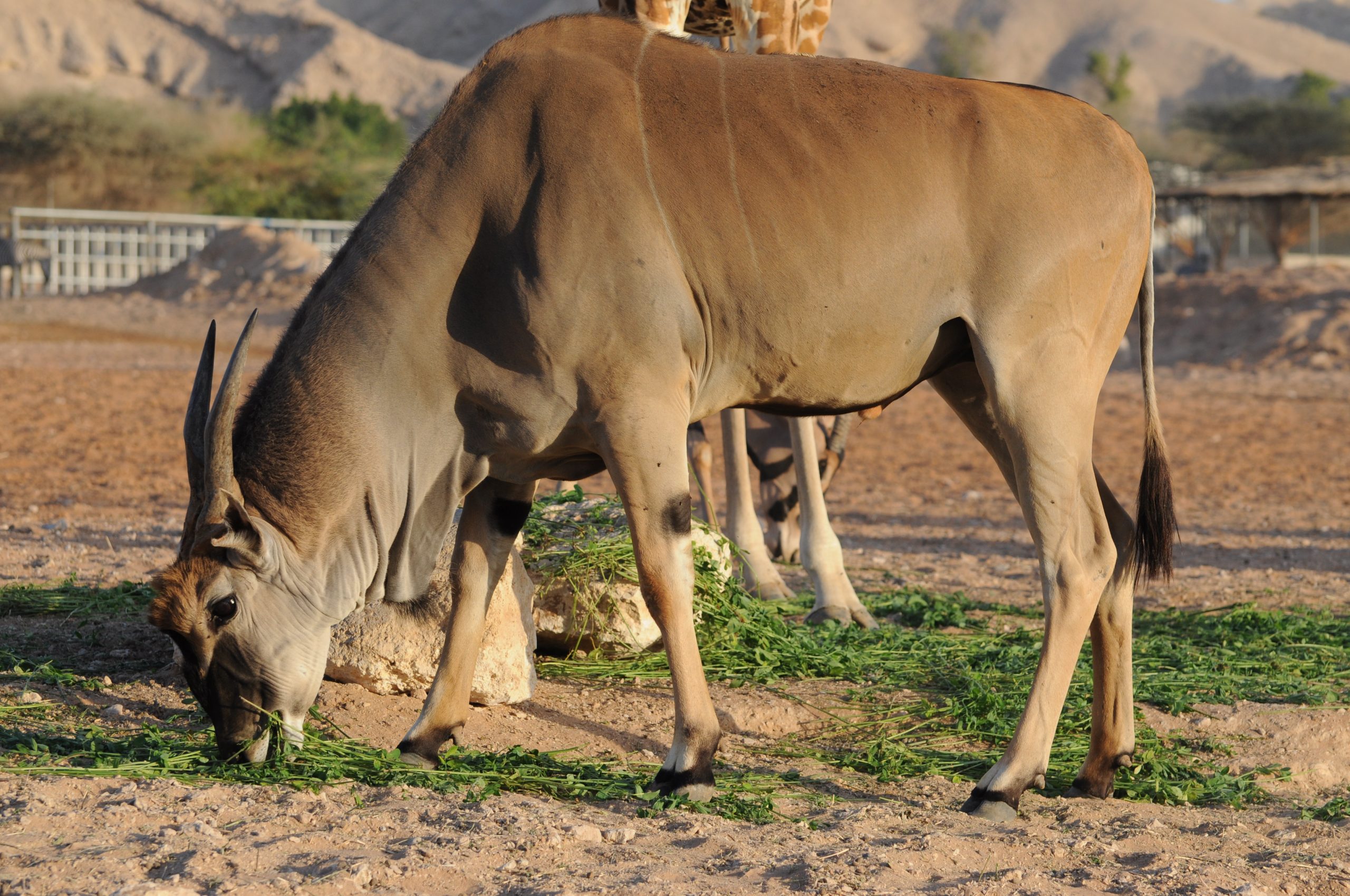
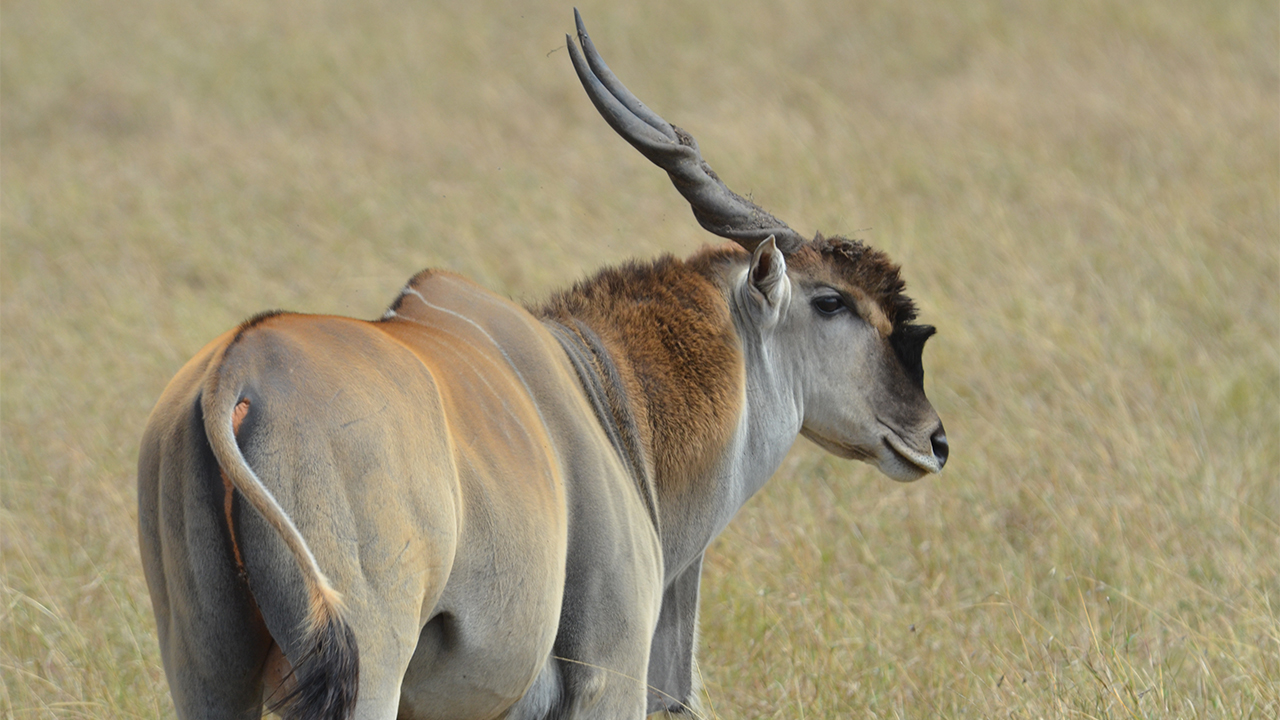
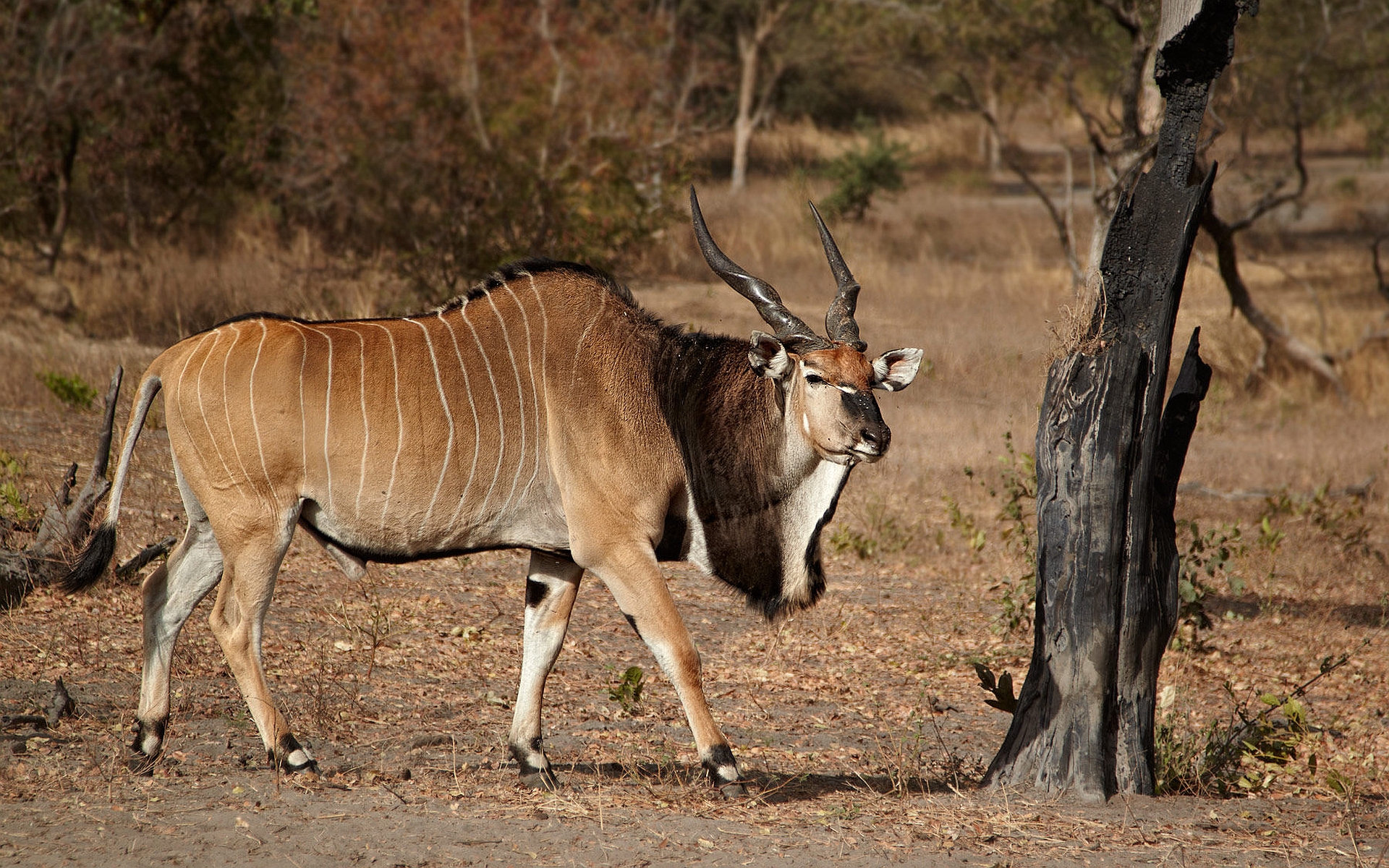
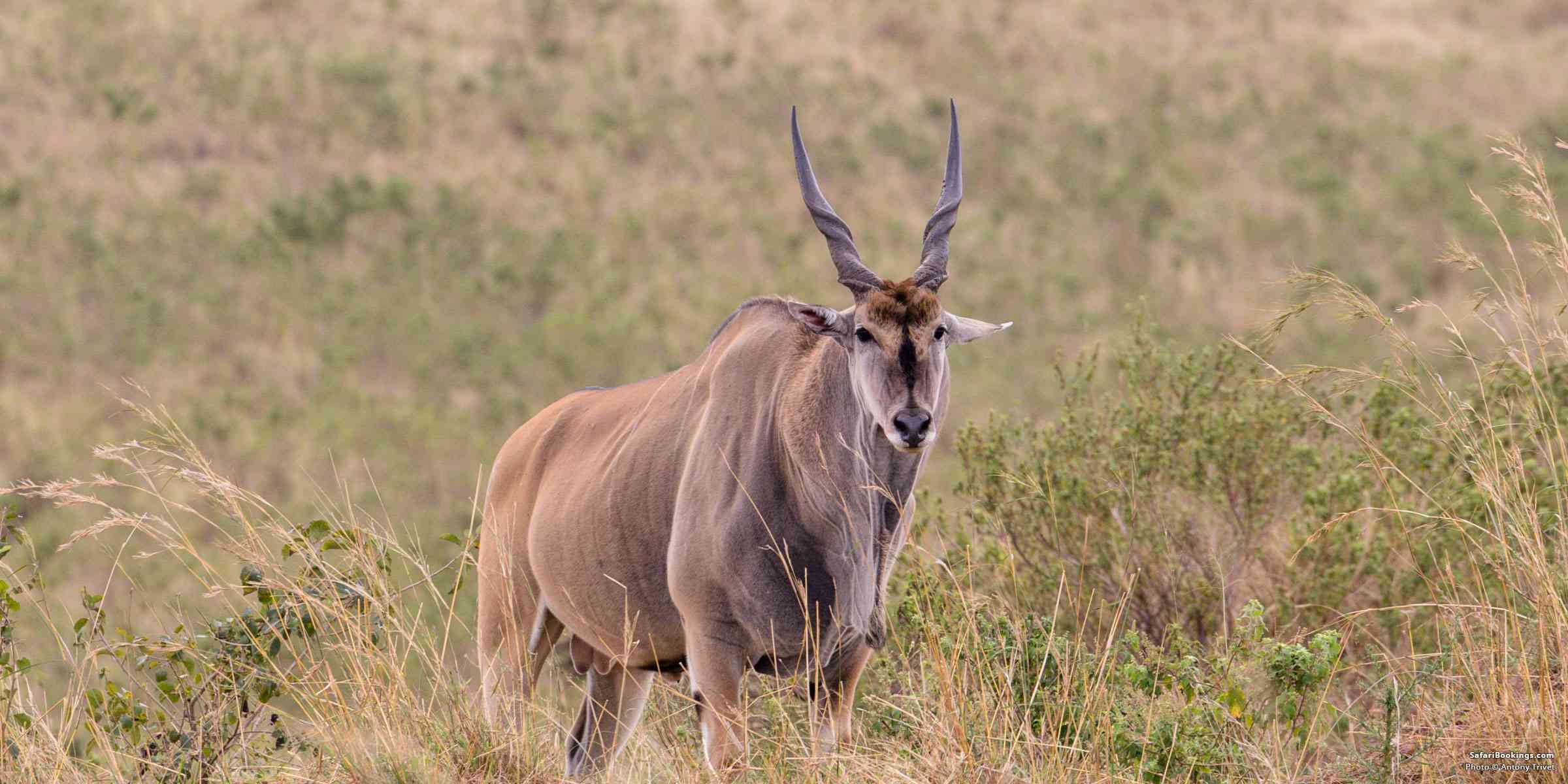
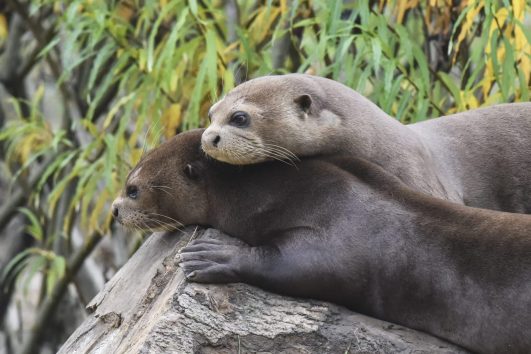

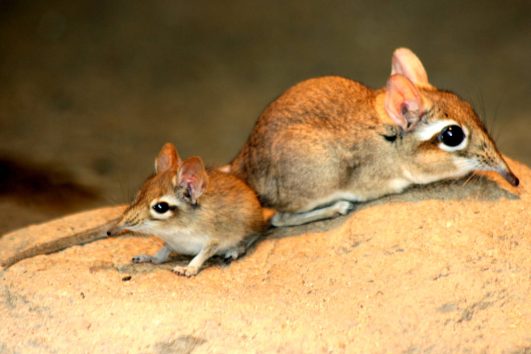
Tour Reviews
There are no reviews yet.
Leave a Review